django rest_framework Authentication
# 简介
本文介绍的是 django rest_framework的认证方式.
Token、Session、RemoteUser、jwt等认证方式。前三种是框架自带的,而jwt需要安装第三方库djangorestframework-jwt,然后使用。
# 源码解析
以下是认证源码认证流程.
- 通过路由匹配后首先进入到
ApiView.as_view中.
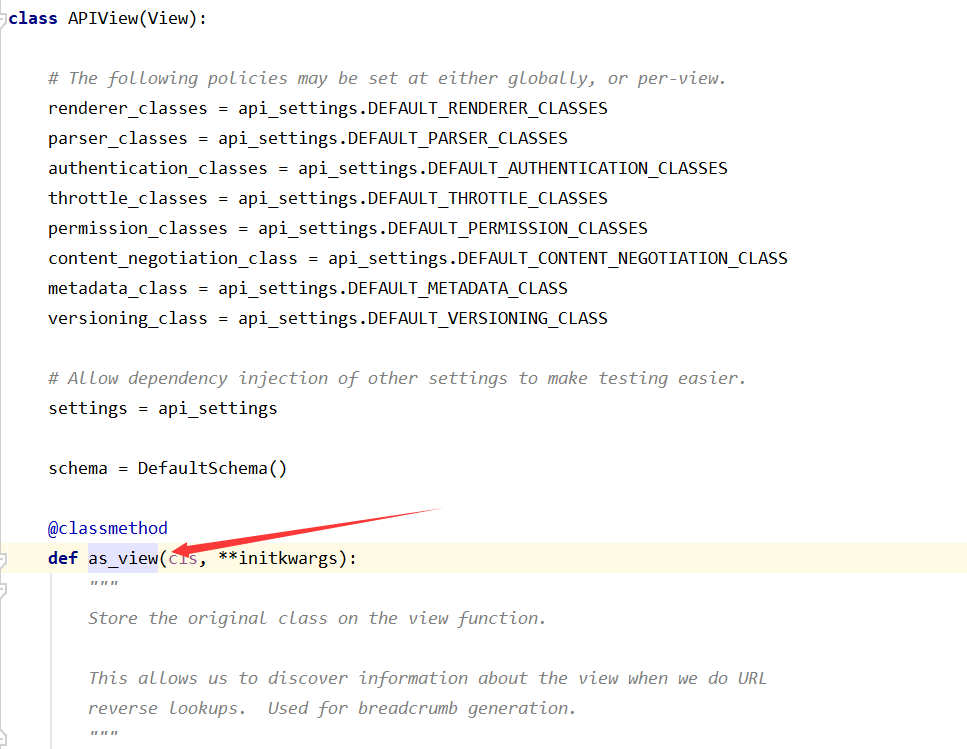
ApiView继承Django的View,然后调用View.as_view
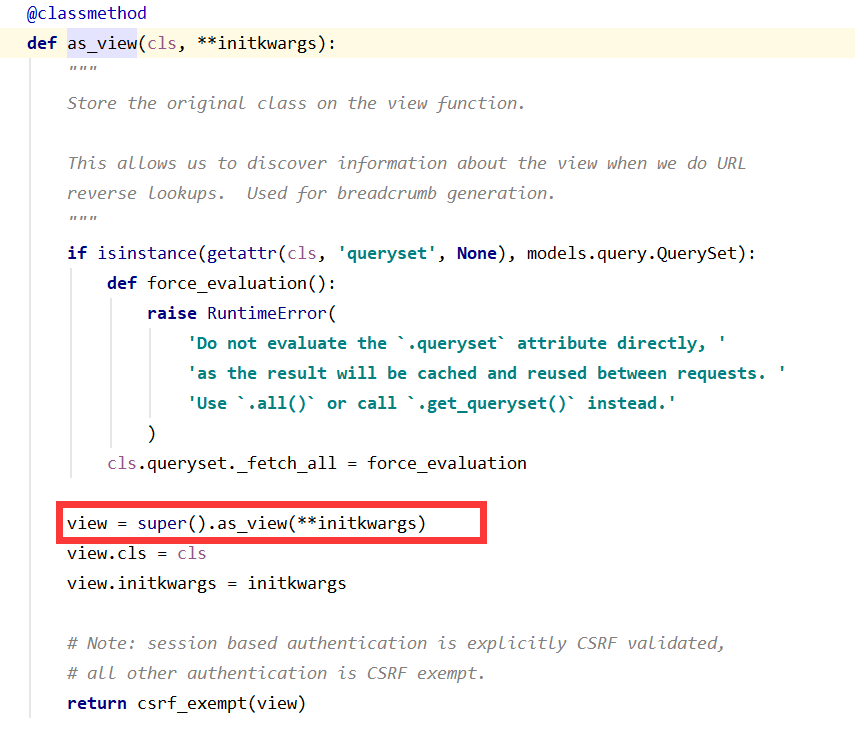
- 在
View中调用dispatch方法,因为ApiView实现dispatch方法,所以调用的是ApiView.dispatch而不是View.dispatch.

- 在
ApiView.dispatch中将django.request再次封装成框架的rest_framework.request
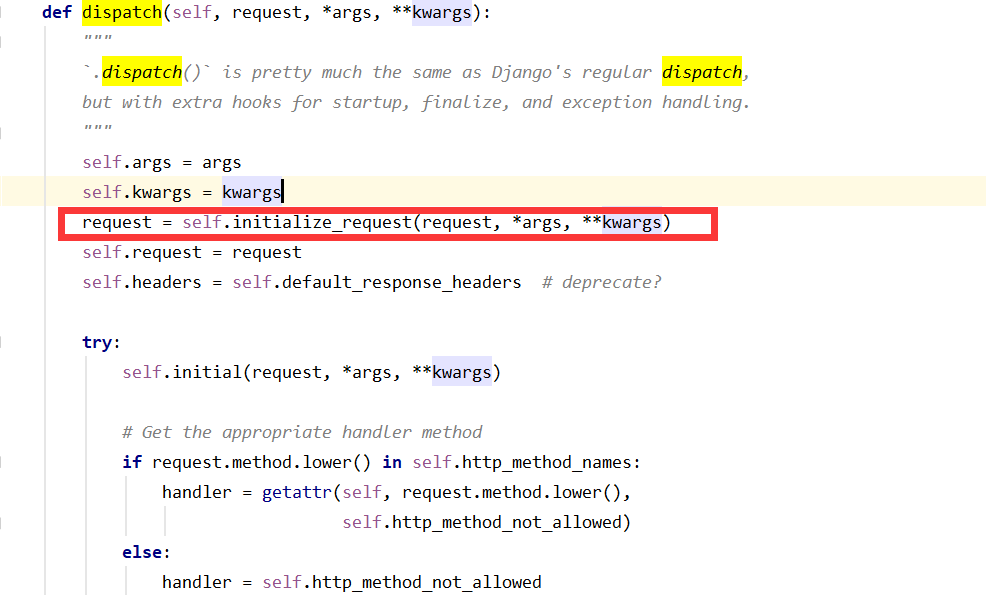
- 封装的过程中将配置的Authentication类注入到request中.
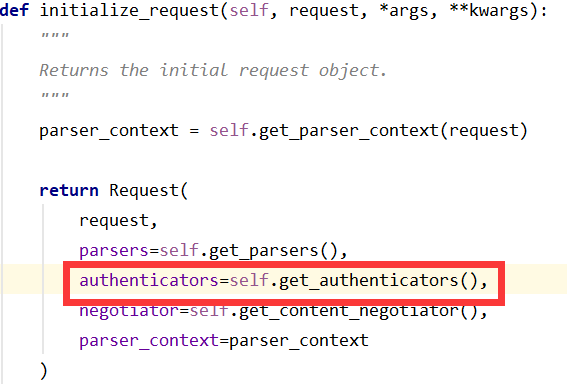

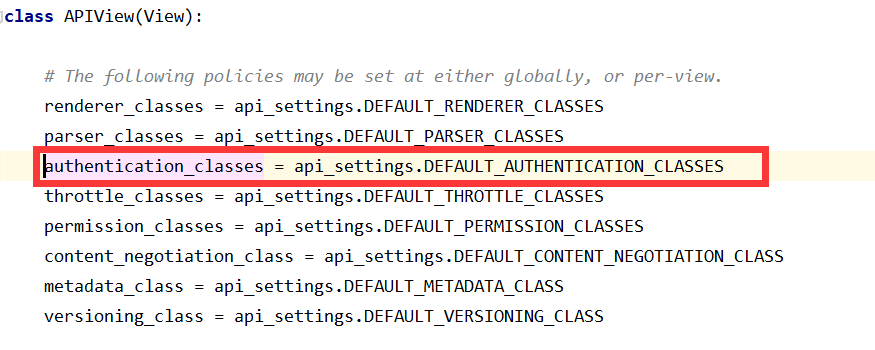
- 封装完request后,调用
ApiView.perform_authentication开始认证
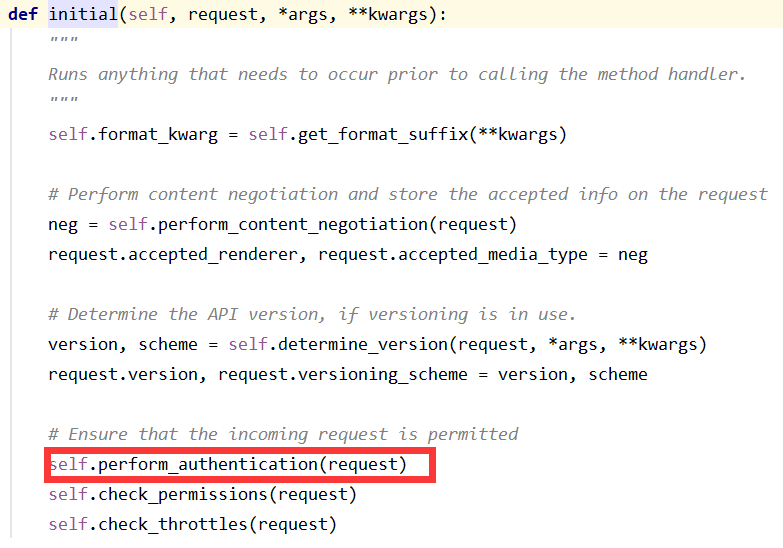
- 认证的过程是通过
request.user,然后再调用request._authentication进行循环遍历所有注入的Authentiation类中authenticate方法进行认证,认证成功则返回user和auth两个结果
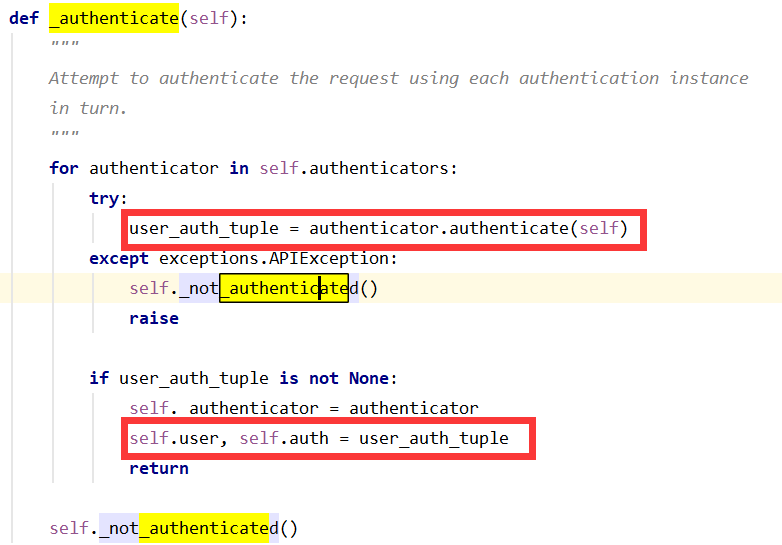
# 认证方式
可以自定义认证类,只需要继承BaseAuthentication类,然后实现authenticate方法即可,然后将该类注入到request即可.
或者使用框架自带的认证类也可。
# Token
是框架自带的认证方式之一.
# 使用
- 配置authtoken app settings
INSTALLED_APPS = [
...
'rest_framework.authtoken']然后使用python manage.py migrate,会创建authtoken表,该表连接auth_user.表,每个用户都有对应一个token,用户每次访问带有该token,系统就能通过token得到当前user.
- 局部添加认证方式.
在TestView添加TokenAuthentication认证, 路由到TestView时,会调用该类中的authenticate方法,通过token获取到user.
view.py
from rest_framework.authentication import TokenAuthentication
class TestView(APIView):
authentication_classes = (TokenAuthentication,)
def get(self, *args, **kwargs):
return HttpResponse(self.request.user)- 全局添加认证方式
任何路由请求需要通过Token认证.
settings.py
REST_FRAMEWORK = {
'DEFAULT_AUTHENTICATION_CLASSES': [
'rest_framework.authentication.TokenAuthentication',
]
}# 缺陷
- Token验证是放在一张表中,即authtoken_token中,key没有失效时间,永久有效,一旦泄露,后果不可想象,安全性极差。
- 不利于分布式部署或多个系统使用一套验证,authtoken_token是放在某台服务器上的,如果分布式部署,将失效,或多个系统用一套验证,将必须复制该表到相应服务器上,麻烦费力。
鉴于以上缺陷,使用jwt更加优秀.
# session
drf中session认证,是通过django SessionMiddleware和AuthenticationMiddleware中将user存储到request中,然后获取到的.
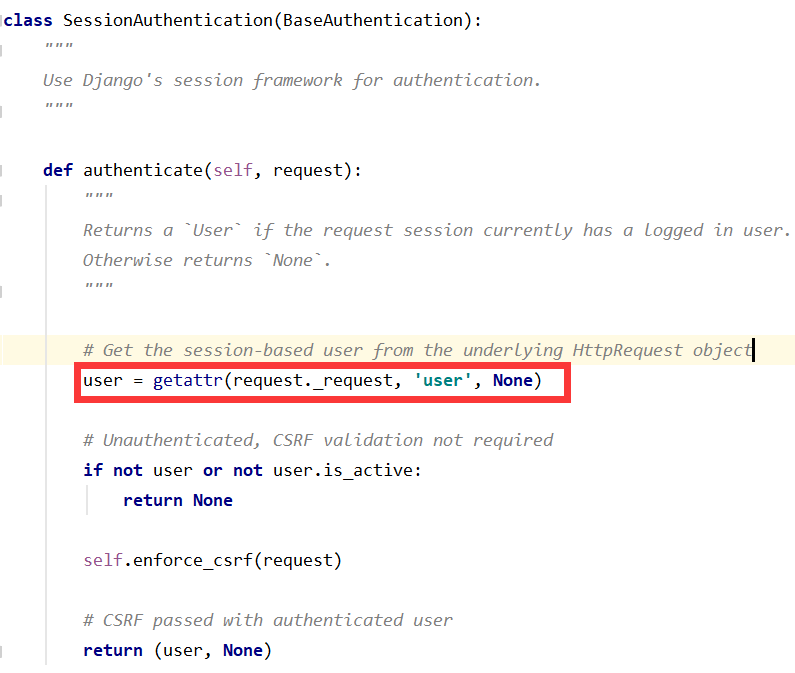
本文参与 腾讯云自媒体同步曝光计划,分享自作者个人站点/博客。
原始发表:2022-08-10,如有侵权请联系 cloudcommunity@tencent.com 删除
评论
登录后参与评论
推荐阅读
目录
相关产品与服务
云服务器
云服务器(Cloud Virtual Machine,CVM)提供安全可靠的弹性计算服务。 您可以实时扩展或缩减计算资源,适应变化的业务需求,并只需按实际使用的资源计费。使用 CVM 可以极大降低您的软硬件采购成本,简化 IT 运维工作。

